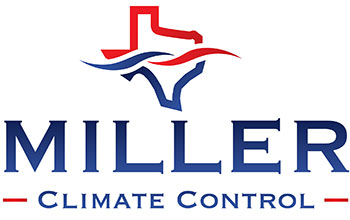
If you’re thinking over air conditioner installation in Georgetown, you should also be looking at your new air conditioner’s SEER rating.
SEER is short for Seasonal Energy Efficiency Rating. In summary, it gauges how efficient your air conditioner is at transforming electricity into cold air. A high number means your air conditioner is more efficient, which is great for your energy bills.
However, there are lots of differing solutions to choose from for air conditioners. And a greater SEER rating usually includes a bigger cost. So, how can you find out which one is ideal for your residence?
At Miller Climate Control LLC, we provide a free, no-pressure home comfort analysis. You can book one by contacting us at 512-937-2001. Our experienced air conditioner installers will collaborate with you to help you choose the right air conditioner for your budget. Plus, they’ll also give you a free, no-obligation estimate.
Right now, let’s review SEER ratings and how they can impact your loved ones’ comfort. And your electric bills.
Why Do the SEER Ratings Even Matter?
In 2016, the federal government developed new SEER rules. New air conditioners are mandated at baseline 13 SEER in the northernmost United States and 14 SEER in the southeast and southwest. If you don’t know when you had your air conditioner installed or what its SEER number is, you can find the sticker on the unit outside your house. If you can’t see the sticker, you can give us a call at 512-937-2001 for support.
If your air conditioner was replaced prior to that date, it’s probably much less efficient. Air conditioning technology has rapidly advanced in the past few years, with huge developments in energy efficiency and smart home capacity. Connecting your new air conditioner with a smart thermostat could help you spend less on cooling expenses, since the thermostat can automatically regulate your temperature settings when you’re gone.
If your current air conditioner has a SEER rating between 8 and 10, installing a 14-SEER system could save you close to 30–50% on annual cooling bills. Your savings depend on your air conditioner size and your temp settings.
Is the Higher the SEER the Better?
An air conditioner with a better SEER rating will be more efficient at transforming electricity for cooling. The most efficient systems, which can go as big as 26 SEER, have ENERGY STAR® designation. This endorsement shows the air conditioner meets EPA rules for energy savings and environmental conservation.
While ENERGY STAR air conditioners are typically more expensive, you’ll normally get the difference returned over time through reduced electrical expenses. These air conditioners, which are usually rated 16 SEER and up, need about 8% less electricity than other new models, according to ENERGY STAR.
One of the greatest differences between a 14 SEER and 16 SEER is variable-speed capability. A variable-speed air conditioner can run at different speeds. This refines comfort for your family while keeping your electric expenses down. It can also keep temperatures and humidity more even, since it can run for longer without needing a lot more power.
When installing a variable-speed air conditioner, you’ll want to ensure that your furnace or air handler is compatible. This is because your air conditioner depends on this unit’s blower to send cold air around your house. Furnaces only run for around 20 years, so if yours is around that mark, we advise getting furnace installation at the same time so you can enjoy all the benefits of your variable-speed air conditioner.
When you’re ready to replace your air conditioner, the cooling professionals at Miller Climate Control LLC are available to assist you. Give us a call at 512-937-2001 to request your free home comfort analysis today.

